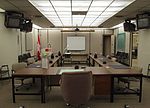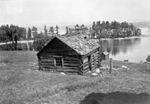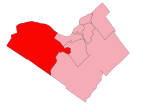Carp Airport
Airports of the British Commonwealth Air Training PlanCertified airports in OntarioTransport in Ottawa

Ottawa/Carp Airport or Carp Airport (ICAO: CYRP) is located 1.2 nautical miles (2.2 km; 1.4 mi) south of Carp, Ontario, Canada, a small village that is now part of Ottawa. Carp is the only airport in the Ottawa area where private hangar space is readily available, so it is a popular home base for local general aviation pilots. The airport had been owned by the city of Ottawa until 2005 but was transferred to a private company, West Capital Developments, who plan to build an airport community and industrial park at the airport.
Excerpt from the Wikipedia article Carp Airport (License: CC BY-SA 3.0, Authors, Images).Carp Airport
Thomas Argue Road, Ottawa West Carleton-March (West Carleton)
Geographical coordinates (GPS) Address External links Nearby Places Show on map
Geographical coordinates (GPS)
| Latitude | Longitude |
|---|---|
| N 45.3225 ° | E -76.022222222222 ° |
Address
Ottawa / Carp Airport
Thomas Argue Road 1500
K0A 1L0 Ottawa, West Carleton-March (West Carleton)
Ontario, Canada
Open on Google Maps








